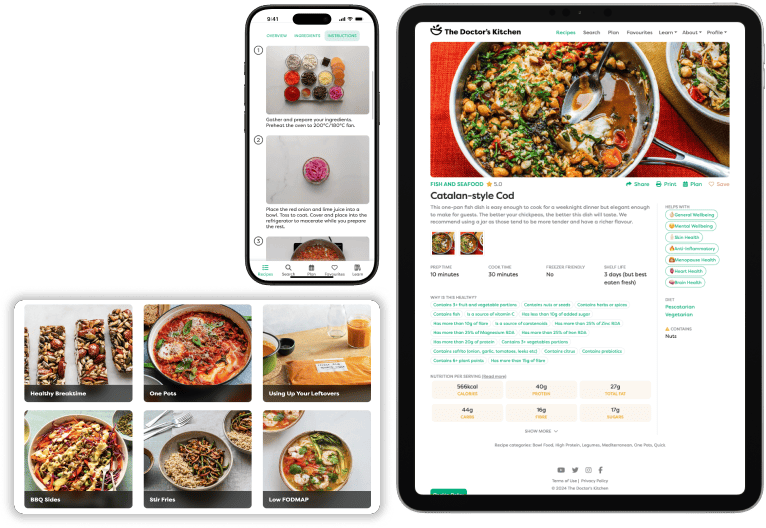Peas: Not like other greens
17th May 2023
Peas are not vegetables but part of the legume family, like lentils and beans. But unlike most legumes, peas are harvested while still green and fleshy. They can be eaten fresh as sweet, vibrant spheres, or dried and cooked into soups and stews.
Key points
In a Nutshell

Download it here or save it on Pinterest.
History Snippets

Not so English: Our history with peas dates back thousands of years. The wild plant is native to Southwest Asia, where it was recognised for its food value at an early date. The seeds were gathered to eat fresh in June and stored as dry seeds for year-round use. (Rungruangmaitree et al. 2017)
At the Dawn of Agriculture: It’s one of the oldest plants cultivated by early human civilisations in the Middle East about 10,000 years ago. The crop was then carried to Europe, likely along the migration of ancient grains. It was mostly grown to be dried and cooked or ground into flour. (Trněný et al. 2018)
From Victorian England to the American Freezer: In the late 1800s, peas became a standard element of English cookery, with new varieties like “garden peas” and “English peas”. In the 1920s, they were among the first sold frozen foods in the US.
Research Digest
Legumes, including peas, are considered a healthy element of a balanced diet.
Disease prevention: Large studies found that eating a variety of legumes – like peas, beans and lentils – was linked to lower risks of heart disease and colorectal cancer.
Blood glucose levels: A small study in young men found that adding pea components to foods improved their glycemic control.
Gut health: A small study in elderly individuals found that adding pea hull fibre to foods helped in the management of constipation.
Interpret with care: Some studies exclude fresh peas from the legume group or do not clearly define what qualifies as legumes. With these complexities, it’s hard to evaluate the health benefits of fresh peas in our diets.
So, what’s in those humble peas anyway?
Quick Food Science
Peas have been recognised as an inexpensive source of:
- Soluble and insoluble fibres
- Vitamins and minerals, namely vitamins B and C, calcium, potassium and iron
- High-quality proteins
- Phenolic acids, such as coumaric, vanillic and caffeic acids. They may improve cellular antioxidant activity.
- Isoflavones, such as genistein and daidzein. They possess several important functions, including anti-carcinogenic effects. (Kumari et al. 2021)
In daily life: Become a legume adventurer and mix it up! Include at least 4 weekly servings of diverse legumes in your meals, such as fresh and dried peas, beans and lentils. A portion of green peas is roughly 3 heaped tablespoons. Cooking inspiration coming your way!
Earth to Plate
Peas in a Pod: Peas are the small, spherical seeds of pods produced by the Pisum sativum plant. The seeds can be green, yellow, white or variegated. More about growing peas.
Season: Typically, fresh peas emerge from their pods during the spring and summer months. But the majority of peas we consume are frozen, making them an all-year staple.
Pea Power! Peas, like other legumes, are considered an environmentally friendly crop – they enrich the soil with nitrogen and reduce the need for synthetic fertilisers.
Buy local & seasonal: If you can try fresh peas from local farmers this season, seize it with both hands! Find your local farmer here.
Tasty Tips
Peas Around the World
- Lebanon: Bazella w Riz, a hearty flavourful pea and lamb stew served with rice.
- India: Matar Paneer, made with peas and cottage cheese in a tomato base.
- Algeria: Tajine Jelbana, a traditional North African meat stew prepared with peas, artichoke, potatoes and carrots.
- England: Minted mushy peas, a classic British side dish made by boiling and mashing peas with mint, butter, salt and pepper.
- Italy: Risi e Bisi, meaning Rice and Peas in Venetian dialect.
My Favourite Ways to Enjoy Peas
- Paired with herbal flavours like mint, tarragon or rosemary and veggies like onions, asparagus, artichoke or parsnip.
- Peas-ful Pesto: Blend fresh peas with basil, Parmesan cheese, garlic, pine nuts and olive oil. Enjoy it on pasta, spread it on sandwiches or use it as a dip for veggies.
- Risotto: Add cooked peas to your favourite risotto recipe. The creamy texture of the risotto pairs perfectly with the tender sweetness of the peas.
- Roasted Pea Snack: Roast peas with olive oil and spices until they turn slightly crispy.
- Peas and Eggs: Add peas to scrambled eggs or omelettes.
4 Recipes to Try Out!
- 3-2-1: Herb and Walnut Crumbed Fish with Pickled Red Cabbage
- Kimchi Fried Rice
- Pea and Sweet Potato Soup with Cardamom and Fennel
- Curried Red Lentils (App)
- Access over 800 research backed recipes
- Personalise food for your unique health needs

Relevant recipes
-
Free!Budget Friendly 4.9
Sweet Potato & Parsnip Frittata
-
Free!Budget Friendly 4.6
Curried Red Lentils
-
Free!Picnic Friendly 3.9
Courgette and Pea Quinoa Tart
-
Free!Budget Friendly 4.8
Dr Rupy's Midweek Risotto
-
Free!Pasta 4.3
Spinach, Pea and Broad Bean Pasta with Fennel and Pistachio
-
Free!Curries
Sri Lankan Inspired Aubergine Slow Cooker Curry
-
Free!Pasta 3.9
Creamy Broccoli, Pea and Edamame Pasta Bake
-
Chicken 4.7
Chicken, Broccoli and Sundried Tomato Orzotto
-
Free!Fusion 4.6
Samosa Pie
-
New!Family Meals 4.0
Beef and Lentil Cottage Pie
Related articles
-
Ingredients
Cranberries
-
Ingredients
Bread: How to choose quality loaves
-
Ingredients
Mushrooms: Vitamin D & immune support
-
Ingredients
Pumpkin: Rich in carotenoids for eye health & cancer prevention
-
Ingredients
Coffee: How to make a healthy cup
-
Ingredients
Olives: Healthy or too salty?
-
Ingredients
Fennel: Pain relief powerhouse
-
Ingredients
Olive Oil: Getting the most health benefits
-
Ingredients
Vinegar for blood sugar, cholesterol & weight loss?